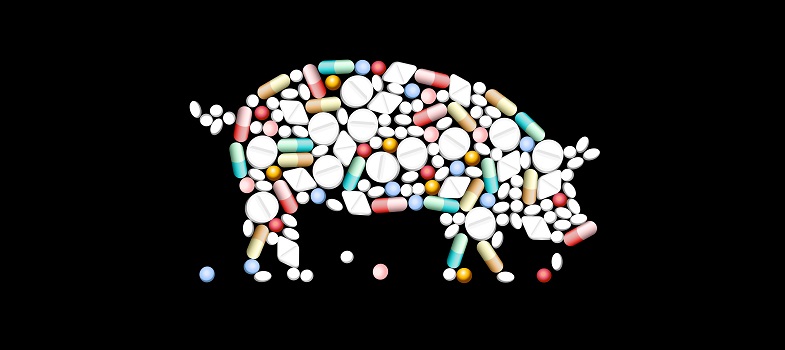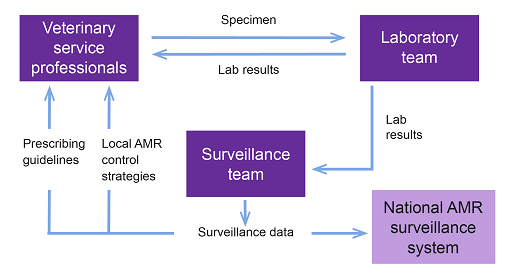3.3 The role of the animal health stakeholders
As explained in the module AMR surveillance and you, the responsibility for AMR surveillance is distributed across various professional roles. The next activity aims to provide you with an opportunity to reflect on your role and responsibilities in relation to the surveillance activities.
Activity 8: The role of the animal health stakeholders
Think about the surveillance activity you are involved in: for example, it could be data collection, data validation, data analysis and interpretation, reporting or dissemination of surveillance results and information.
Use the information from Activity 7, where you identified the journey of the sample, flow of information and feedback.
- Can you identify the main stakeholders and institutions conducting the surveillance activities? You can think of people and organisations involved in data collection, data analysis and interpretation, dissemination of information, provision of feedback, decision-making, etc.
- What is your role? What are your responsibilities? Is it a local or national role?
- Which other professionals do you interact with from the animal health sector and human health sector? What information do you share? Do you share results or take joint decisions?
- Who plays a role in communication and dissemination of information?
- Do you provide or receive feedback of results?
- What do you think are the barriers to integration of surveillance across sectors?
Discussion
Your answers will be specific to your setting. You might have thought about professionals you interact with who might depend on your role. (For question 6, potential problems in some systems could include a lack of time to discuss information with other professionals, lack of communication channels to other professionals (such as human and veterinary clinicians), language barriers, and differing priorities and ways of working.)
Similarly, you might be in charge of analysing samples, and know that the purpose is to detect or understand trends, but other animal health stakeholders can be communicating information to farmers, designing policies, or conducting risk analysis, or will only use the data to assess actions.
Figure 12 might help you to reflect on the connections in your setting. It is only a generic representation of the connections between the stakeholders involved in surveillance, such as the veterinary service professionals, laboratory team or surveillance team, and it shows the information they exchange and the direction of the information. This might be different in your setting.
Consider each of the stakeholders below and select the most appropriate role they play that contributes to the surveillance network.
Diagnostic laboratory staff
Data scientists and epidemiologists
Veterinary services or animal health professionals
Policy-makers
a.Documenting clinical information, collecting samples, providing feedback and advice to the farmer on what treatment is needed or should be avoided
b.Deciding which interventions need to be prioritised to minimise AMR risks
c.Performing tests
d.Analysing, interpreting and reporting data
- 1 = c
- 2 = d
- 3 = a
- 4 = b
Using the following two lists, match each numbered item with the correct letter.
3.2 The flow of samples, information and feedback




